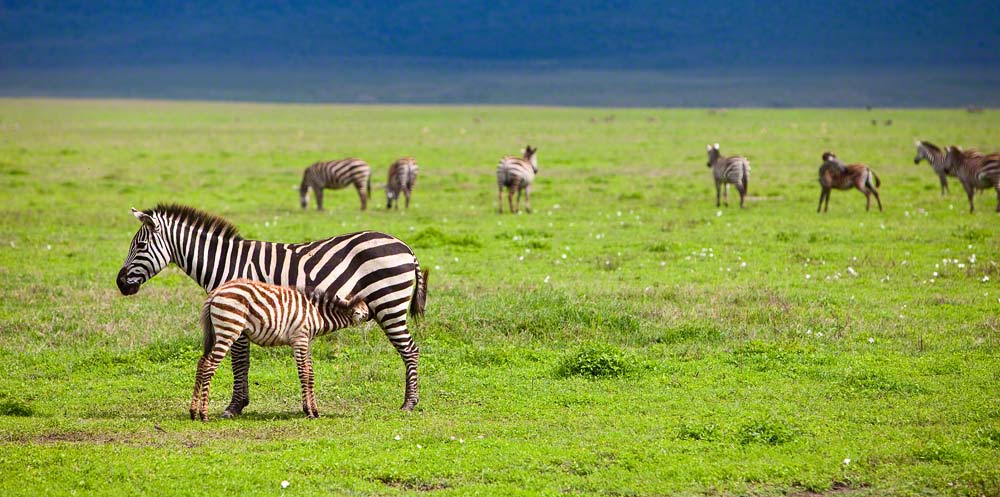
The Ngorongoro Crater is a conservation area and a UNESCO world heritage site that probably has the highest concentration of wild animals per square meter in Tanzania. Wherever you go, you’ll encounter some wildlife. The crater is a 265 km2 volcanic caldera that is 600 m deep, and it’s home to over 25,000 large animals. The legendary annual wildebeest and zebra migration also passes through Ngorongoro, as 1.7 million wildebeest, 260,000 zebra and 470,000 gazelles move south toward Ndutu in December and north to Kenya in June to find food and water as the seasons change.
Just like a human fingerprint, every zebra’s stripe pattern is unique.
The “Big 5” game animals in Africa are the African lion, African elephant, Cape buffalo, African leopard and the white/black rhinoceros. Sometimes in Ngorongoro, you can spot all the Big 5 in a single day. We didn’t see all of them during our visit, unfortunately, as we only spotted leopards in the Serengeti. However, if you want to see a black rhino, this is the location to be. Ngorongoro is the only place in Tanzania where the chance of seeing them is high. You can also find rhinos in the Serengeti; but even so, our guide (Maningo) only saw a rhino in the Serengeti once over two years. In Ngorongoro, he sees them on every trip. Ngorongoro hosts 26 rhinos that rangers protect 24/7. Off-road driving isn’t permitted, and sadly, these animals are often only seen from far away.
It’s important to note the weather while planning your trip to Ngorongoro, as it can get extremely chilly. We visited Tanzania in December, and we only needed to wear windbreakers on top of our woolly sweaters in Ngorongoro – and still, it wasn’t warm enough. From June to September, temperatures can drop as low as 10°C, and the fog can be so thick that you won’t see anything. That day, we were really unlucky. As we began our descent into the crater, the weather started getting worse and worse. It was either raining heavily or overcast with black clouds the whole day. We’re still wondering how we managed to take any photos. 🙂 When we were leaving the crater, the weather suddenly improved: the sun came up, and a bright rainbow appeared in the sky. Indeed, we were just unlucky!
The crater also has the densest known population of lions, totaling 62 animals. With so much food roaming around, they’ve become rather lazy.
There are also many small Maasai villages (called “boma”) around the Ngorongoro crater. We visited one of these places. No other tourists or cars were near the boma, so it’s hard to say if it was a “tourist attraction” or a real village. The Maasai sang and performed a “jumping ritual” in which we also participated.
We were then allowed to walk around the village. One family presented their hut, and the local school was also shown to us. Our visit was very hasty, and we were constantly interrupted when trying to take any photos. Fifteen minutes later, we were literally thrown out. In general, we have mixed impressions about the visit; it was interesting to meet a Maasai tribe, but we also felt remarkably uncomfortable and unwelcome.
Visited December 2009

